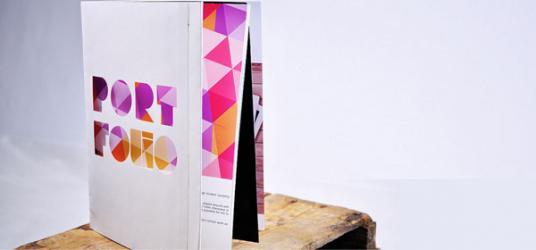
Displaying past experience is a vital part of applying to any job regardless of the type of job. Whether you’re demonstrating effective customer service skills from a past retail job or coding skills from a past software engineering gig, transferable skills are very important. However, showing rather than telling allows you to exhibit your work visually to a prospective employer. For example, if you wanted to illustrate your event planning experience, you could show a complete event plan that shows many details and logistics. This also lends more credibility to you, the applicant.
So you’re probably wondering where this is going. Well, those pieces of information – often compiled into a readable format, either in print or in digital format – are known as portfolios. A portfolio allows you to visually show your work from a variety of sources, regardless of your area of study. Here are some tips to help you compile a portfolio for your job search, print or digital, offline or online.
The Print Portfolio
Let’s start with the print portfolio. Most print portfolios are compiled with paper sized 8.5x11 (letter size). The print portfolio can be put together in any way you like, and Nubbly Twiglet shares some inspiration here if you’re looking for some ideas. The binder/folder/scrapbook where you place your portfolio pieces can be as creative or as simple as you’d like – it’s all up to you. Just remember that the external cover is the first thing an employer will see, and you’ll want to make a good first impression, so keep it professional.
Get Organized
With regards to organization and what to place in your portfolio, here are a few tips. Firstly, create a list in your head or on paper of all the work you’ve done so far in your life, and gather the key points. Once you’ve done that, include work in your portfolio that is relevant to the job application, but ensure you are brief. Too many examples of the same thing may make it seem like you don’t have experience or skills outside of those projects, even if this is not the case.
Tell A Story
Secondly, make sure the first piece you put in your portfolio speaks to the employer, even without an explanation from you. You want to make an impact on the employer as soon as they open your portfolio. Put your best (and most relevant) work at the front – this sets the tone for the rest of the portfolio as well. Try to tell a story with all the work you’ve put in – it could be chronological, experience-based, etc. You want to demonstrate why you’re a fit for the job, so having a meandering portfolio won’t help that much. Furthermore, remember that a print (or digital) portfolio is never really ‘finished.’ As you gain experience through volunteering, paid work, projects, coursework, etc., keep your portfolio updated. You want your portfolio to accurately reflect who you are and what you have to contribute.
The Digital Portfolio
Much of what has been discussed about print portfolios can also be applied to digital portfolios, though you have a lot more flexibility, as they do not need to follow a linear page-to-page format. Even if you don’t have experience building a website, you still have many options. You could create an inviting SlideShare, a WordPress blog, and even a Pinterest account with multiple boards that combine together to tell a story. If you’re more familiar with design sites, take a look at some great free portfolio sites. On the other hand, even if you’re not planning on building a website from the ground up, you could use a WordPress template and buy a domain name for yourself (e.g. wilfraser.com) – this will enable you to permanently retain your name on the internet and also allows you to give yourself an online presence that isn’t Facebook, LinkedIn or Twitter. You also want to ensure your resume is posted in PDF format online in case a recruiter comes across your site, and having a contact page so that they can get in touch with you would be ideal as well. Here are some more tips about standing out with your digital portfolio.
And remember, there’s nothing worse than having a connection failure during an interview because of faulty equipment, so bring something like a few printed pages of your website, or a digital device that can access the internet. You can also offer to email the website link to the employer after the interview in case any issues arise in accessing it.
Closing Thoughts
A portfolio is like an image – one piece can speak volumes about you and your work and may be critical to your job search, even if you are not a design student. Just keep these tips in mind and you will hopefully be on your way to success. Good luck!
Beyond the Blog
-
Career Development Manitoba has a (lengthy, but comprehensive) PDF with lots of good tips about creating a career portfolio. You can view it here.













